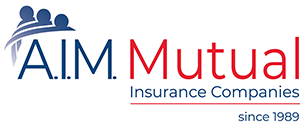Injury Prevention by Industry

Construction
Construction encompasses a wide range of activities involving building, altering and repair. There are standards in the industry which apply specifically to certain activities. In addition, some general industry standards may apply. Learn more about some of the hazards in construction and how best to prepare to protect your employees. Download Top Four Construction Hazards
What Are the Risk Factors?
- Unprotected sides, wall openings and floor holes
- Improper Scaffold Construction
- Unguarded protruding steel rebar
- Misuse of portable ladders
- Whenever employees are exposed to six feet or more above a lower level, use a Guardrail System, Safety Net System or Personal Fall Arrest System.
- Cover or guard any floor holes.
- Install Guardrail Systems along all open sides and ends of platforms.
- Provide safe access to scaffold platforms.
- Do not climb cross-bracing as a means of access.
- Guard all protruding ends of steel rebar with rebar caps or wood troughs. You may also bend rebar so the exposed ends are no longer upright.
- Position any portable ladder so the side rails extend at least three feet above the landing.
- Make sure the weight on the ladder will not cause the ladder to slip off its support.
- Before each use, inspect ladders for cracked or broken parts such as rungs, step, side rails, feet and locking components.
Resources and Training Guides
Prevention Videos: Construction Hazards
OSHA Fall Protection in Construction
OSHA Fact Sheet - Scaffold Safety
OSHA Training Resources by Industry
What Are the Risk Factors?
- Contact with power lines
- Lack of ground-fault protection
- Path to ground missing or discontinuous
- Equipment not used as designed
- Improper use of extension and flexible cords
- Look for overhead power lines and buried power line indicators. Post warning signs.
- Contact utilities for buried line locations.
- Stay at least ten feet away from overhead power lines.
- Assume overhead lines are energized unless otherwise known.
- Use non-conductive wood or fiberglass ladders when working near power lines.
Resources and Training Guides
OSHA E-Tools: Electrical Incidents
Electrocution Hazards: Instructor Guide
Study Guide: Electrocution Hazards
What Are the Risk Factors?
- Machinery with unguarded moving parts
- Buried-in or cave-ins of unprotected trenches and excavations
- Becoming pinned between machinery, worksite elements, etc
- Identify a competent person to inspect trenching operations. He/she should be capable of identifying any hazard and authorized to eliminate the hazard.
- Ensure excavations and trenches that are five feet deep or more--and less than 20 feet--are protected by sloping/benching, a trench box or shield, or by shoring.
- Ensure there is adequate means of access and egress from excavation.
- If an excavation is more than 20 feet deep, the services of a professional engineer are required to design a protection worker system.
Resources and Training Guides
OSHA Construction E-Tool: Trenching and Evacuation
Training Guide: Caught-in Hazards Module
What Are the Risk Factors?
- Vehicles
- Falling or flying objects
- Construction or masonry walls
- Wear seat belts that meet or exceed OSHA standards.
- Check vehicles before each shift to assure safe operating condition.
- Do not drive in reverse gear with an obstructed rear view.
- Wear hard hats.
- Stack materials to prevent sliding, falling or collapse.
- Use protective measures such as toe boards and debris nets.
- Do not place construction loads on a concrete structure without identifying loading limits.
- Shore or brace structures adequately until permanent supporting elements are in place.
- Allow essential personnel only in the work area.
Resources and Training Guides
Struck-by Hazards: Instructor Guide
Construction E-Tool: Vehicle Inspection
Construction E-Tool: Brake Systems

Healthcare
The healthcare industry is uniquely involved with the provision of health services to individuals. These services can occur in a variety of work settings, including hospitals, assisted living facilities and nursing homes. Find out how to safeguard employees in the healthcare industry.
What Are the Risk Factors?
- Sudden movement by a patient, resident or client when healthcare worker is inserting a needle
- Recapping a needle
- Collision with a co-worker who may be in transit with a sharps device
- Placing sharps in a container during disposal
- Use universal precautions: All bodily fluids should be treated as if they are potentially infectious.
- Train all employees with potential exposure to bloodborne pathogens in accordance with requirements established by the OSHA Bloodborne Pathogens standard.
- Purchase devices with integrated safety features, e.g., self-sheathing needles, retracting needles, and needleless systems.
- Prohibit recapping of needles. If absolutely necessary, do not allow two-handed recapping.
- Advise healthcare workers to use caution when changing bed linens and carrying garbage and linen bags away from the body. Also use caution if placing them on a rolling cart to be transported.
- Ensure disposal procedures include placing used sharps in wide-mouth, puncture-proof, leak-proof containers. Locate the containers where sharps are commonly used; remove and replace containers when three-quarters full. Do not wait until they are completely full.
Resources and Training Guides
OSHA's Bloodborne Pathogens Standard
Sharps Safety for Healthcare Settings: CDC
Training for Development of Innovative Control Technologies (TDICT) - Preventing Exposure to Blood
What Are the Risk Factors?
- Working directly with individuals who have a history of behavioral issues, violence, drug or alcohol abuse
- Poor design of work environment including room layouts which may block an employee’s vision or interfere with easy exit and poorly lit corridors, rooms or parking lots
- Lack of means of emergency communication
- Inadequate security and unrestricted access to facilities, clinics and hospitals
- Lack of comprehensive staff training regarding how to de-escalate situations and how to interact with individuals who have dementia or who may exhibit violent behaviors
- Design areas for safety. Provide sufficient lighting, install curved mirrors, arrange furniture for easy exit, and, when possible, ensure that rooms have two exits.
- Determine the behavioral history of patients, residents or clients to learn about any past behavioral concerns and identify possible triggers, such as certain dates, visitors or staff.
- Communicate any concerns regarding the potential for aggressive behaviors using chart tags/flags, log books and reports, particularly during hand off at change of shift. Work collaboratively to develop the best approach for managing an individual’s behavior.
- Install panic buttons at workstations and make sure they are regularly maintained.
- Ensure that the public does not have unlimited access to patient, resident or client areas.
- Provide staff with comprehensive training in de-escalation and self-protection as well as specialized training in how to interact with individuals suffering from dementia, if applicable.
Resources and Training Guides
Guidelines for Preventing Workplace Violence for Healthcare and Social Service Workers - OSHA
Management of Aggressive Behavior Training
National Council of Certified Dementia Practitioners
What Are the Risk Factors?
- Repeated and forceful movements associated with lifting, transferring, and repositioning
- Awkward postures when providing direct care
- Increasing weight and size of patients and residents
- Increasing numbers of critically ill patients and residents
- Implement a comprehensive safe patient handling program.
- Report incidents immediately.
- Conduct a thorough accident investigation and root cause analysis.
- Identify and remediate potential barriers to safe work practices.
Resources and Training Guides
Safe Patient Handling & Mobility - NIOSH
Guidelines for Nursing Homes: Ergonomics for the Prevention of Musculoskeletal Disorders
Resource Guide: Safe Patient Handling in Acute Care
What Are the Risk Factors?
- Wet floors in hallways, rooms, near sinks, and kitchen areas
- Loose cords and cables from phones, clinical equipment and computers
- Clutter or debris, particularly in patient or resident rooms and storage areas
- Uneven surfaces, such as buckled carpeting and broken tile or pavement
- Report and clean up spills immediately and use signage to indicate wet areas.
- Use beveled-edge or flat water-absorbent, slip-resistant mats where water, ice, soap or hand sanitizer might drip.
- Wear slip-resistant footwear.
- Bundle loose cords, tubes and cables and store them away from areas with foot traffic.
- Remove clutter.
- Report and repair damaged flooring and outdoor walking surfaces.
- Regularly inspect indoor and outdoor walkways and parking lots.
Resources and Training Guides
Slip, Trip and Fall Protection for Healthcare Workers

Hospitality
The Hospitality industry poses risks unique to the business of serving meals and specialty beverages as well as providing travel accommodations. Start by identifying these hazards and educating your workforce. View Food Service Safety
What Are the Risk Factors?
- Lack of Personal Protective Equipment (PPE) use
- Improper release of steam from cooked food items
- Spills or splashing of hot food items
- Provide and inspect hand burn protection items, e.g., gloves, potholders, etc.
- Establish procedures and training for handling hot food items. Always release steam away from the body.
- Use tongs to lower food into boiling water.
Resources and Training Guides
What Are the Risk Factors?
- Dull knives
- Improper cutting technique
- Lack of cut-resistant gloves
- Ensure knives are kept sharp.
- Establish a system for reporting problem equipment and knife replacement.
- Always cut away from the body. Any slips will be less likely to cause injury.
- Provide properly fitting, cut-resistant gloves. Make it a requirement that they be used.
Resources and Training Guides
Seven Steps to Avoid Restaurant Lacerations
Hospitality/Restaurants Safety Tips
What Are the Risk Factors?
- Improper storage of heavy materials
- Excessive reaching
- Repetetive bending
- Design and organize the workplace to make manual handling easier. Heavier loads should be stored between shoulder and hip height, while lighter loads should be stored near the floor or above the shoulder.
- Store frequently used utensils, dishes and food between shoulder and hip height, close to where they are needed.
- Use a step stool when reaching for items above the shoulders to prevent an upper body strain or a poor grip, reducing the risk of items falling.
Resources and Training Guides
Housekeeping Ergonomics (presentation)
What Are the Risk Factors?
- Slippery surfaces due to water, grease or other food items
- Unexpected obstacles in walkways
- Uneven walking surfaces such as worn tile, mats and carpets, or brick and pavement
- Conduct regular, frequent inspections of working and walking areas to identify hazards which could cause slips, trips or falls.
- Repair or replace walking surfaces which present a risk for trips and falls. Immediately highlight the damaged area as a temporary means to prevent injury.
- Advise personnel to wear proper footwear for better traction on slippery surfaces.
Resources and Training Guides
Kitchen Safety Tips

General Industry
There are safety standards regardless of occupation, industry and size. Learn about how to safeguard your business - and be sure to find out about your specific industry.
What Are the Risk Factors?
- Working in close proximity to moving equipment
- Placing body parts in pinch points associated with tools, materials, equipment or vehicles
- Improper storage of materials which can fall or collapse if not well secured
- Be aware of mobile equipment and make eye contact with the operator before you approach.
- Advise employees to wear high visibility clothing so equipment operators are alert to pedestrians.
- Identify pinch points and potential energy sources associated with equipment.
- Ensure stored materials are properly secured to prevent fall hazards.
- Determine safe height limits to prevent excessive stacking heights.
Resources and Training Guides
Basics of Machine Guarding: Hazards and Solutions
Guide to Stacking Bulk Materials
What Are the Risk Factors?
- Unexpected obstacles in walkways
- Uneven walking surfaces such as worn or damaged flooring or outdoor landscape
- Slippery surfaces due to weather-related conditions such as rain, snow and ice
- Conduct regular, frequent inspections of working and walking areas to identify hazards which could cause slips, trips and falls.
- Repair or replace walking surfaces which present a risk for trips and falls. Immediately highlight any damaged area as a temporary means to prevent injury.
- Wear proper footwear for better traction on slippery surfaces. For rough terrain, wear ankle-supported boots.
Resources and Training Guides
OSHA Slips, Trips and Falls Training
Preventing Slips, Trips and Falls: National Safety Council
What Are the Risk Factors?
- Lifting, pushing and pulling material with excessive weight
- Storing material in locations which require awkward postures, e.g., reaching away from the body and twisting
- Tasks involving repetitive motions such a frequent bending
- Determine safe lift limits and ensure that employees adhere to the set limit.
- Use material handling equipment such as carts, dollies and lifts to transport heavy materials.
- Store materials in a location that can be accessed without bending or reaching.
Resources and Training Guides
Ergonomics - Solutions to Control Hazards: OSHA
OSHA Materials Handling and Storage
OSHA Ergonomics eTool: Solutions for Electrical Contractors
What Are the Risk Factors?
- Working with the public
- Handling money transactions
- Late night or early morning work schedule
- Establish a no-tolerance for workplace violence policy and implement a procedure for reporting violent behavior.
- Educate employees on techniques designed to effectively deal with conflict resolution and de-escalation.
- Review workplace access controls.
Resources and Training Guides
Workplace Violence Prevention Plans: OSHA
Department of Labor Workplace Violence Program
CDC/NIOSH Violence on the Job Video Training
